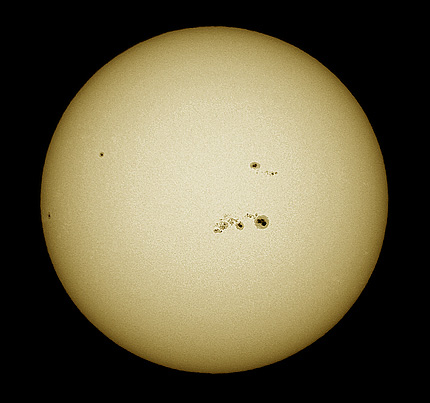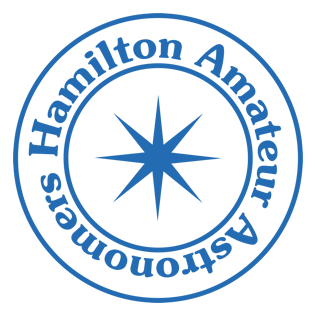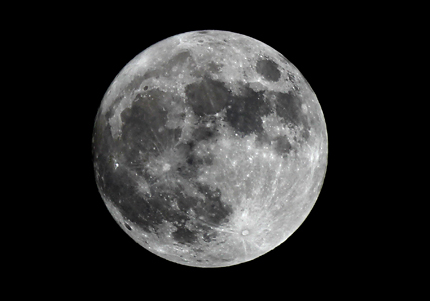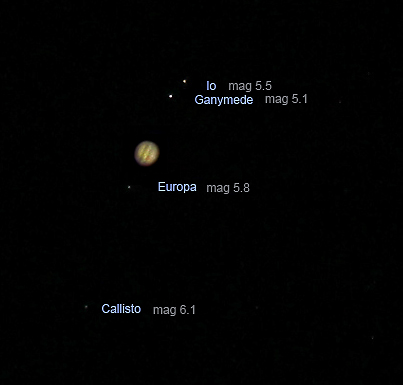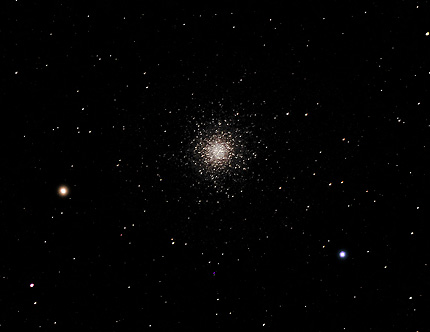Although the sun is at solar max, and has finally flipped its magnetic poles, it hasn’t felt like there’s been too much solar activity. Now, finally, we have a big sunspot grouping. AR1944 has not only been active, but is large enough to be seen with the naked eye. Remember, always use appropriate solar filters when observing the sun. I could see the spots naked eye, using my Baadar mylar solar material, and through my 90mm refractor it looked quite spectacular. Unfortunately the seeing today was terrible, producing wavy images, but I did manage to get an image through the scope. Here it is below, with a second one showing a blow-up of the largest group. If you have a solar filter, don’t miss this magnificent sunspot grouping. It’s the best we’ve had so far this solar cycle.
